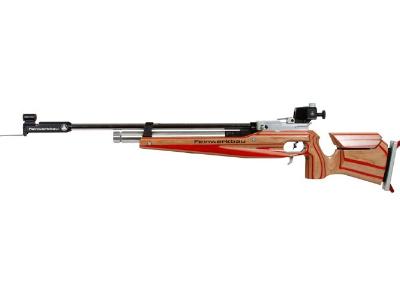
Air Rifle
Versatile air rifle built for target shooting, plinking, or small game – power, accuracy, and fun in every shot.
Air Rifles: How They Work
Understanding Air Rifles
Air rifles are popular among shooting enthusiasts for their accuracy, low noise, and lower cost of ammunition compared to traditional firearms. These rifles use compressed air or gas to propel projectiles, making them an excellent choice for target practice and small game hunting.
The Mechanics Behind Air Rifles
So, how do air rifles work? The fundamental principle involves using compressed air or gas to push a pellet down the barrel. Here are the main components that contribute to their functionality:
- Piston: In many air rifles, a piston compresses the air in a chamber when the shooter pulls the trigger.
- Compression Chamber: This is where the air is compressed before it propels the pellet. The amount of compression affects velocity and power.
- Barrel: The pellet travels through this smooth tube, which can vary in length and diameter based on design.
- Sights: Most air rifles come equipped with open sights or scopes to improve accuracy during shooting.
The Types of Air Rifles
A better understanding of how they work also requires knowledge of different types available on the market:
- Pneumatic Air Rifles: These use manual pumping or pre-compressed air cylinders to generate pressure. They are known for their consistency and ease of use.
- Spring-Piston Air Rifles: These utilize a coiled spring that compresses when cocked. Upon firing, the spring releases energy that drives a piston forward, compressing air behind the pellet.
- C02 Powered Air Rifles: These rely on carbon dioxide cartridges as a power source. They offer semi-automatic shooting capabilities but may have less power than other types.
The Shooting Process
The operation process is straightforward once you understand ‘air rifles how they work.’ Here’s what happens when you shoot an air rifle:
- Cocking: The shooter cocks the rifle by either pulling back a lever or breaking open the barrel (for break-barrel designs).
- Airing Up: For pneumatic models, this step involves filling up with compressed gas if not already done.
- Aiming: Using sights or scopes helps aim accurately at targets.
- Shooting: Pulling the trigger releases pressure from the compression chamber, sending air out rapidly behind the pellet and propelling it forward through the barrel towards its target.
The Benefits of Using Air Rifles
Understanding ‘air rifles how they work’ also brings awareness to their advantages:
- No Gunpowder Required: Since they use compressed air/gas instead of gunpowder, they are quieter and cleaner alternatives for shooting sports.
- Easier Maintenance: With fewer moving parts compared to traditional firearms, maintenance is generally simpler for users.
This efficient mechanism makes them ideal for both novice shooters learning precision techniques and seasoned marksmen honing their skills without disturbing others nearby. Understanding ‘air rifles how they work’ not only enhances your shooting experience but also promotes responsible usage within various environments. CONTACT US YOUTUBE